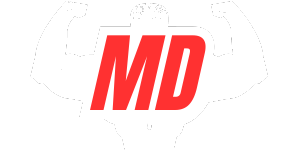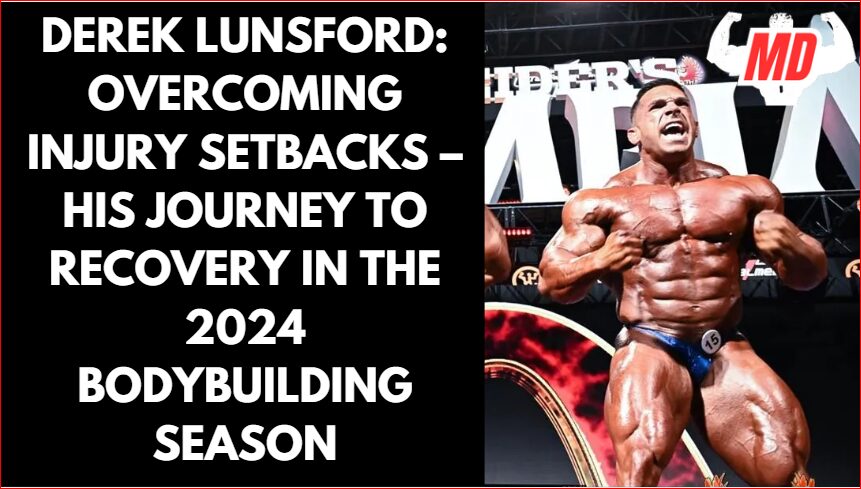Derek Lunsford is a prominent figure in bodybuilding, renowned for his immense physical presence, work ethic, and determination. Competing at the highest level, he has earned a reputation for his incredible symmetry and aesthetics. However, like many elite athletes, his journey hasn’t been without setbacks.
Background on Derek Lunsford
Derek Lunsford’s rise in bodybuilding has been nothing short of meteoric. A native of Indiana, he quickly gained attention for his muscular density, allowing him to dominate in the 212 division and, later, the Open class. His transition from a 212 Olympia champion to one of the top competitors in the Open class is a testament to his dedication and talent.
Lunsford’s competitive spirit has seen him on the podium at some of the most prestigious competitions, including his 2021 Mr. Olympia 212 win and runner-up finishes in the Open division. These accolades have solidified his place among the sport’s elite.
Nature of the Injuries
Despite his success, Lunsford’s path has not been without its physical challenges. Lunsford faced a minor muscle tear in his calf. This injury proved detrimental, limiting his ability to train specific muscle groups effectively and threatening his competitive edge.
The lower back injury, in particular, impacted his ability to perform critical compound movements like deadlifts and squats. At the same time, the tendonitis in his upper body forced him to scale back his intensity on pressing exercises.
The Recovery Journey
Lunsford’s road to recovery was both strategic and grueling. Working closely with his medical team, Derek followed a comprehensive rehabilitation plan to restore strength and flexibility to the affected areas. His recovery involved weeks of physiotherapy, which focused on healing the injured muscle tissues and reducing inflammation in his tendons.
To expedite healing, he utilized cutting-edge treatments like ultrasound therapy, deep tissue massage, and electrical stimulation. In addition to these therapies, Derek made significant adjustments to his strength training regimen to ensure that he could safely build back his strength while preventing re-injury.

Training Regimen Adjustments
As part of his recovery, Derek Lunsford made several key adjustments to his training regimen. To prevent further injury and promote healing, he reduced the volume of heavy lifting and incorporated more isolation movements that placed less strain on his injured muscles. Instead of pushing his limits with heavy loads, Derek increased his focus on form, muscle contraction, and joint-friendly exercises.
He also emphasized flexibility and dedicated more time to stretching and mobility work. Proper biomechanics also became a priority, as Derek worked diligently to improve his movement patterns, ensuring that every exercise was performed in the safest and most effective way possible.
Support System
Behind every successful athlete is a strong support system, and Derek Lunsford’s team played a vital role in his recovery journey. His coach, medical staff, and rehabilitation specialists worked harmoniously to ensure that Derek could recover fully while staying mentally focused on his goals.
Derek’s mental resilience was perhaps one of his greatest assets. His relentless drive to return to peak form never wavered despite the frustration and setbacks. He leaned on his team for encouragement and guidance while maintaining a strong personal motivation to overcome the obstacles in front of him.
Nutrition and Supplementation
Nutrition became a critical element of Derek Lunsford’s recovery process. Understanding that diet plays a key role in healing, he made necessary adjustments to his nutrition plan to support muscle repair and reduce inflammation.
His meals were rich in lean proteins, healthy fats, and anti-inflammatory foods like fish, nuts, and leafy greens. He also paid close attention to his micronutrient intake, ensuring he consumed enough vitamins and minerals to boost immune function and accelerate recovery.
Supplementation played a role, too, with Derek incorporating joint-support supplements like glucosamine and collagen alongside regular protein powders and amino acids to aid in muscle growth and repair.

Lessons Learned and Prevention Strategies
Having faced these challenges head-on, Derek Lunsford learned valuable lessons about the importance of endurance, resilience, and injury prevention. One of the key takeaways from his journey was the need to listen to his body more closely.
In the future, Derek plans to continue focusing on proper warm-ups, mobility exercises, and smart programming to minimize re-injury risk. His recovery experience has also instilled a deeper appreciation for rest and recovery as integral parts of his training regime, underscoring the importance of balancing intensity with proper recovery strategies.
Frequently Asked Questions
How did Derek modify his training regimen during recovery?
Derek reduced the volume of heavy lifting and focused on isolation exercises that placed less strain on his injured areas. He prioritized proper form and movement patterns, incorporated more flexibility work, and emphasized stretching and mobility exercises to aid in his recovery.
Who was part of Derek Lunsford’s support team during his recovery?
Derek relied on a close-knit support team that included his coach, medical professionals, and rehabilitation specialists. Their collective expertise, combined with Derek’s mental resilience, played a crucial role in guiding him through recovery.
What role did nutrition play in Derek Lunsford’s recovery?
Nutrition was vital to Derek’s recovery. He adjusted his diet to include anti-inflammatory foods, lean proteins, and nutrient-dense meals to support muscle repair. He also used supplements like glucosamine, collagen, and amino acids to aid joint health and muscle recovery.



